Natural disasters and mobile technology: the seconds that can save your life
Alarm management and the organization of intervention services is a hot topic.
A topic covered almost daily by television stations because of weather events happening in italy and the rest of the world.
We think of individual events that have affected regions, nations, or cities. We recall the floods that occurred in Senigallia and Benevento, the two cities where our offices are located.
Recently, the United States was hit by Hurricane Irma, an Atlantic hurricane that struck the Caribbean islands. It came down with extreme force in Florida with wind speeds reaching 297 km/h. Great damage to the Caribbean islands and millions of people especially in Florida were left without electricity.
Another event that occurred during the night and early hours of Sept. 10, 2017 concerns Italy, specifically the city of Livorno.
The city was hit by an intense disturbance. In 4 hours the rain of 3 months fell.
The cause is to be found in the confluence of wet currents at the stretch of sea in front of the Tuscany coast.
The currents caused thunderstorms described by forecasters as “regenerating.”
The heavy rains caused flooding, swollen rivers and streams, and fear among the population.
Mobile technology
We believe that technology can help provide better alert, informational, supportive and intervention services.
With tools now within everyone’s reach, it is possible to develop Web-based applications. Applications capable of receiving alarms, process them on the basis of means and manpower available to offer statistical data on the exercise over time.
Each municipality should have one structured on the basis of its specificities and on the basis of the potential risks to which the resident population is exposed.
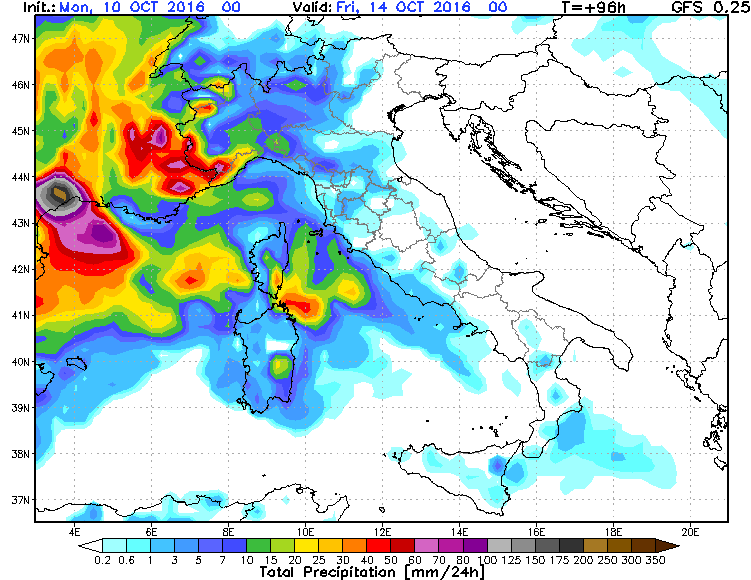
Alarm management in the United States
The United States is a nation exposed to strong hurricanes. This is why advanced technologies have been developed to understand in real time when a storm is about to change into a hurricane and monitor all its movements.
The tools used by meteorologists are currently available to citizens through the Web.
There are many weather forecast portals that devote attention to storms, hurricanes, and tornadoes,
Many of them, have developed Apps to manage all the alarms.
It is important to mention The Weather Channel, the world’s most downloaded weather application. Allows people to stay up-to-date on the forecast and send real-time rain alerts to citizens. This application is used for the IPhone, Apple Watch, IOS, iPad and Apple TV.
The Weather Underground for IPhone, Ipad and Apple Watch is another very accurate application.
Provides forecasts and current weather conditions, customizable alerts to ensure citizens are prepared for any emergency.
Through viewing an interactive map, citizens can track storms and monitor air quality and much more.
Alarm management in Japan
We wanted to check whether other countries have advanced tools for alerting and managing requests able not only to contain the damage, but also to save many lives. One of the closest to us in terms of seismic risk is Japan.
We wanted to study the tools used in the Land of the Rising Sun to warn the inhabitants of the possible arrival of an earthquake.
In 2007, the Japan Meteorological Agency set up the
Early Warning
on earthquakes, which is a system of widespread dissemination of the warning.
This instrument works with sensors that are placed as close as possible to the epicenter and provide the estimated intensity of the earthquake.
The alert is triggered for earthquakes from the fifth degree on the Richter scale. The communication is transmitted to the entire affected population with audible alerts via public TV, radio, on the street, and even from the mobile app Yurekuru.
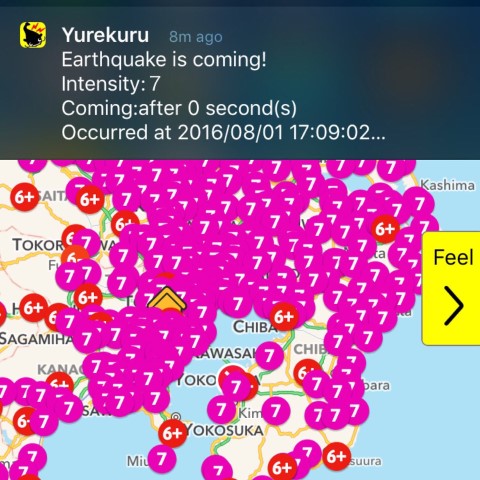
Alarm service is also provided by NTT Docomo, Japan’s largest mobile phone operator.
That operator sends alerts to its customers about incoming earthquakes via text message.
The basis of this service is “Cell Broadcast” technology, which function as an “over-the-air” television and radio broadcast. It alerts all cell phones in the affected area.
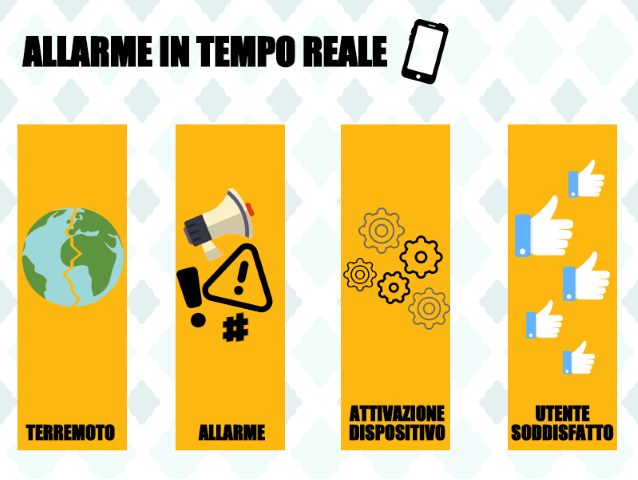
La Apple has made an alert service available to the Japanese population through an app, consistent with receiving emergency alerts directly from Japan’s weather agency and the Japanese government.
Depending on your iPhone model and version of iOS, you can receive alerts about earthquakes, tsunamis, and information about other disasters.
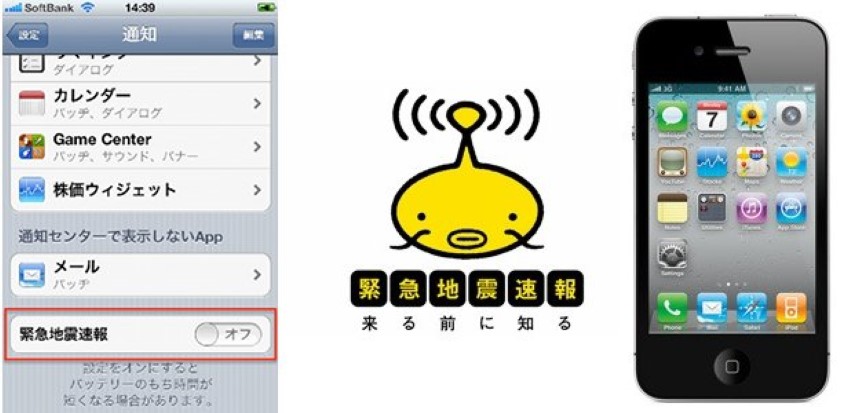
Early Warning in Italy: can it work?
We are talking about notice that varies from a very few seconds to several weeks or days depending on the type of disaster, but in all cases can make the difference between life and death.
Those few seconds before an earthquake make it possible, for example, to slow down a speeding train or warn school children to take cover.
They can trigger automations in health care or in electricity and gas supply for fire prevention.
The snow alert issued a few days in advance may cause people to organize with enough food and water supplies.
Tsunami warnings allow evacuation of areas at risk by moving people from the coasts to the interior, and so on.
Could such a system work for Italy as well?
Most likely yes, but it seems that Early Warning in our country is still in the domain of research.
Research projects include. Earthquake Network, which began in 2013. This project aims to develop a global smartphone-based earthquake detectionnetwork .
When an earthquake is detected, an alert is sent to all smartphones that are part of the network. People who live not too close to the epicenter can run for cover before being reached by seismic waves.
This App currently seems to be the favorite among users, with over 1 million installations.
Mobile solutions offered by Italian entities
In addition to Earthquake Network, which originated from a private project that is proving to be very useful and popular with users, a number of Italian agencies have also made their application available to users to keep them updated on major seismic and atmospheric hazards.
In fact, on the Play Store of their devices it is possible to find:
– INGVearthquakes, distributed by theNational Institute of Geophysics and Volcanology;
-the official Civil Defense App, both of which can be downloaded for free.
As for INGVterremoti, the App allows users to view Italian seismicity since 2005.
Provides access to the News section where you can find updates and insights on the latest seismic events and earthquake risk.
In addition, there is an extensive FAQ.
TheCivil Defense App also extends information to other areas. Contains data on weather, hydraulic, and hydrogeological risk (floods, overflows, landslides), fire risk, industrial, volcanic, health, nuclear, environmental, heat risk, technological risk, bioterrorism, and immigration.
It also provides users with useful notions for appropriate response to all types of disasters (what to do, where to get help, how to prepare to respond to an event, who to contact in an emergency).
What surprises us about these two applications is the low number of installations. Since both are offered by two established credit institutions, we would have expected more feedback from the public.
We decided to download both applications and understand why they are not exploited as much as we thought.
We noticed that as far as INGVterremoti is concerned, the App is not very immediate and requires downloading the database, which among other things must be updated manually each time.
Also, to receive notifications, you must have Twitter on your device and follow INGV, as notifications do not come from the app, but from Twitter.
As for theCivil Defense App, we noticed that push notifications are not segmented by geographic area.
Users may receive an excess of notifications that are not of their own interest because, their location is not taken into consideration.
We will continue to test both Apps to see if there are further updates and improvements.
Our experience with alerts and push notification
As far as we are concerned, in 2017, it has been ten years that a alarm management and monitoring software and of tracking of interventions.
Software that in these colossal snow days is indispensable for a company that operates nearly 50 hydroelectric power plants.
Power plants are located in inaccessible areas that are difficult to access.
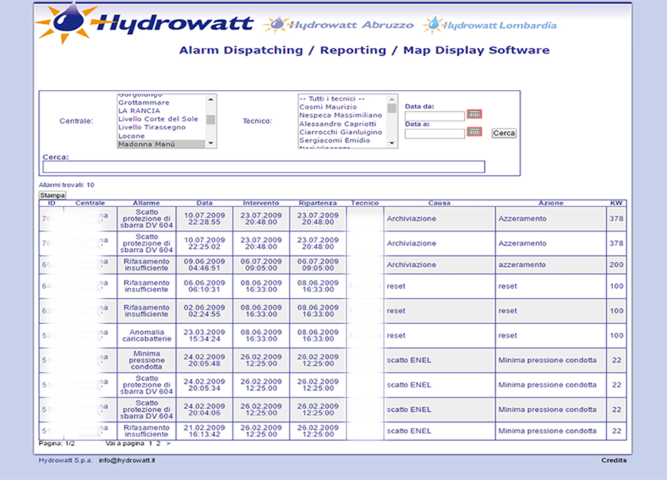
We have recently been working on developing another alert application.
We are talking about Cfeed, a tool that allows municipalities and local governments to communicate with citizens by informing them about events, deadlines and alerts.
This application works by sending push notifications . The notifications are delivered directly to users’ devices, even if the App is not in use.
These are all tools that can be of great use in particular disaster situations, where a simple notification can save many lives.
Share on: